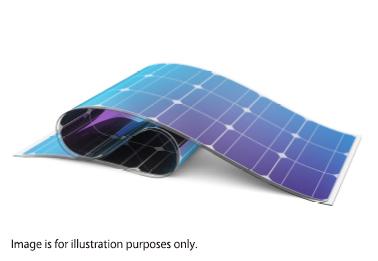Revolutionary Breakthrough in Organic Solar Cell Efficiency
In a remarkable advancement poised to transform the renewable energy sector, a global consortium of researchers has introduced the most efficient organic solar cell ever created. Featured in a prominent scientific journal, this cutting-edge solar technology aims to bolster the practicality of organic photovoltaics, which present a lightweight and flexible alternative to conventional silicon-based solar cells. By merging innovative materials science with sophisticated engineering methods, this team has reached unprecedented efficiency benchmarks, setting the stage for broader adoption of eco-friendly energy solutions. This achievement not only marks significant progress in solar technology but also emphasizes the vital role of international collaboration in tackling pressing climate change issues.
Global Cooperation Fuels Innovation in Organic Solar Cells
A pioneering effort by an international group of scientists has led to substantial improvements in organic solar cell technology, culminating in record-breaking efficiency levels. By harnessing interdisciplinary expertise from various institutions worldwide, this team has made notable advancements aimed at optimizing these sustainable energy sources. Their inventive strategies encompass:
- Innovative Material Formulations: The introduction of advanced polymer mixtures and non-fullerene acceptors that enhance charge transport and light absorption capabilities.
- State-of-the-Art Manufacturing Techniques: Adoption of modern production methods that streamline processes while reducing environmental footprints.
- Unified Testing Standards: Establishment of standardized testing protocols across different countries to ensure consistent reliability and performance evaluations.
This collaborative endeavor underscores how essential global partnerships are for overcoming challenges related to renewable energy. To illustrate their progress quantitatively, here’s a comparison showcasing efficiency metrics over time:
| Type of Solar Cell | Efficiency (%) | Date Developed |
|---|---|---|
| Semi-Conductive Silicon Cells | 26.7% | 2020 |
| Pioneering Organic Solar Cells (Previous Record) | 18.0% | > | > |
The transition towards greener energy solutions is bolstered by advancements like these that not only improve efficiency but also foster collaborative efforts among nations striving for sustainability.
Innovative Design Boosts Energy Conversion Rates
This groundbreaking research introduces an advanced organic solar cell that establishes new standards for energy conversion rates. The design features asophisticated combination of materials, enhancing light absorption while accelerating charge carrier mobility—resulting in significant performance improvements. Researchers have utilized high-performanceorganic semiconductors, known for their cost-effectiveness and adaptability—making them ideal candidates for scalable applications within the solar industry.
The implications of this innovation are extensive; it could potentially revolutionize how we approach solar power generation altogether. Key attributes include:
-
<
li >Enhanced Efficiency Rates: Surpassing previous benchmarks.
< li >< strong >Flexibility: Enabling integration into diverse surfaces.
< li >< strong >Sustainability: Utilizing environmentally friendly materials.
>
>
>
This breakthrough not only promises increased energy output but also paves the way toward more accessible solar technologies—contributing significantly toward achieving a greener future.
Looking Ahead: Strategies for Sustainable Solar Energy Solutions
The recent strides made within organic solar cell technology signal an exciting new chapter for sustainable energy solutions—demonstrating potential pathways toward making renewable resources more efficient and widely available. In light of these findings, it is crucial to prioritize several strategies aimed at effectively implementing organic photovoltaics into practical applications:
- Investment In Research And Development: Ongoing funding directed towards innovative technologies can enhance efficiencies while lowering production costs.
- Collaborative Partnerships: Fostering alliances between academic institutions , research organizations ,and industry leaders can accelerate technological breakthroughs .
- Collaborative Partnerships: Fostering alliances between academic institutions , research organizations ,and industry leaders can accelerate technological breakthroughs .
A successful transition towards utilizing organicsolarenergy requires policymakers along with stakeholders considering regulatory frameworks designed specificallyto promote green technologies . Creating incentivesfor companies investingin solarpowercould significantly alter market dynamics . Below is an outline detailing potential incentives suitablefor policy frameworks :
| “Incentive Type” | “Description” / tr /> /thead /> |
|---|---|
| “Tax Credits”“Provide tax reductions on investments madeinto solarpowertechnologies.” | “Subsidies”“Offer financial assistance gearedtowards developingand installing solarinfrastructure.” | “Grants “
/tbody /> /table /> The Path Forward Towards Sustainable Energy SolutionsThe creationofthe world’s mostefficientorganicSolarCellbyaninternationalteamofresearchers representsa pivotalmomentinrenewableenergytechnology.Thisbreakthroughnotonlyenhancesthepotentialoforganicphotovoltaicsto be commerciallyviablebutalsoopensupnewpossibilitiesforsustainableenergysolutionsinthefightagainstclimatechange.Asresearcherscontinuetoinnovateandrefinetheirapproaches,thehopeisthattheseorganicsolarcellswillplayacriticalroleintransitioningtocleanerenergysources,resultinginagreenersustainablefuture.Withongoingadvancementsinefficiencyandproductionmethods,theoutlookfororganicsolarcellsisbright,pavingthewayforbothinvestorsandconsumersalikeintothisexcitingenergyrevolution. |































